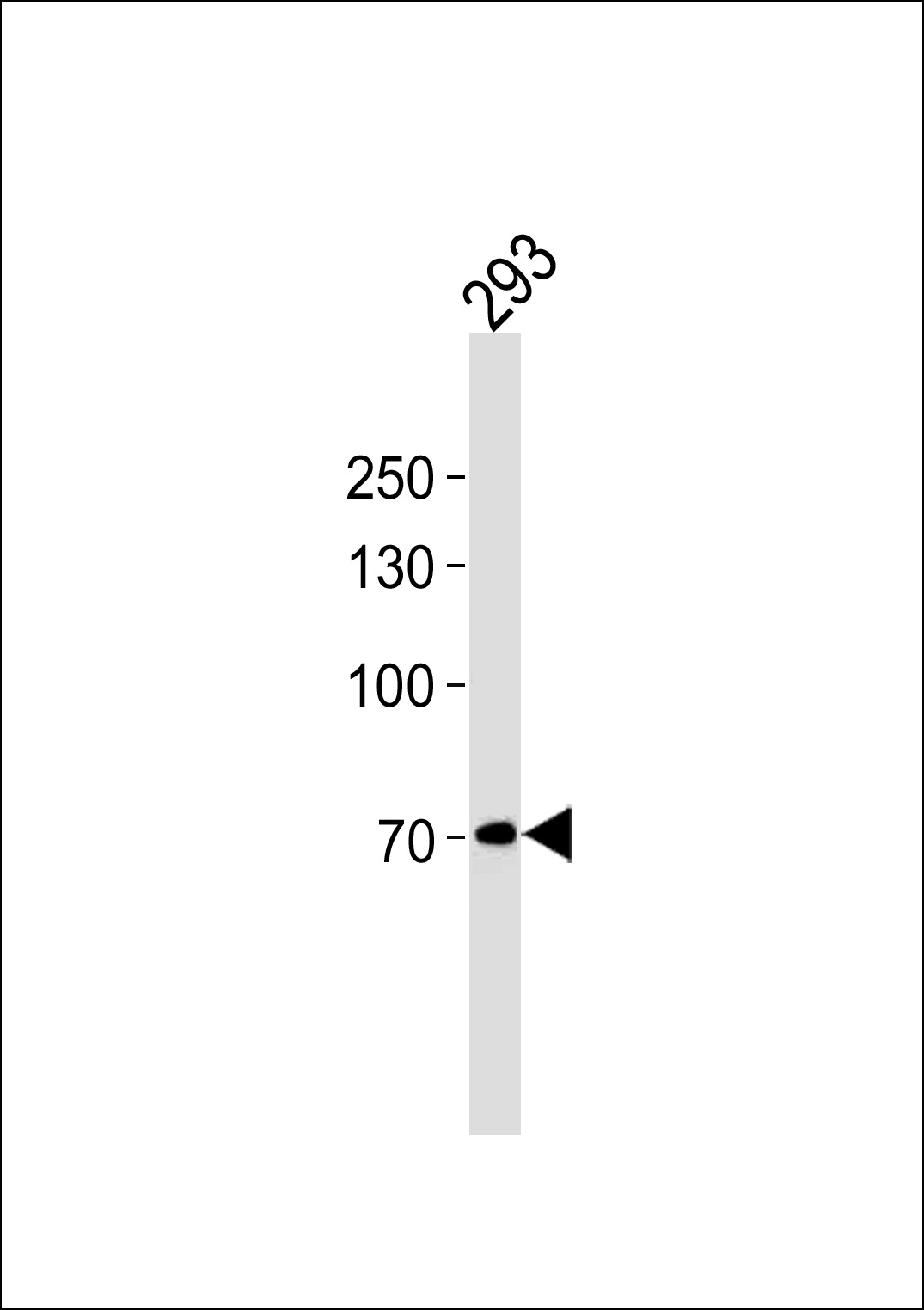POU6F2 Antibody (N-term)
Affinity Purified Rabbit Polyclonal Antibody (Pab)
- 产品详情
- 实验流程
- 背景知识
Application
| WB, E |
|---|---|
| Primary Accession | P78424 |
| Other Accession | NP_001159490.1, NP_009183.3 |
| Reactivity | Human, Mouse |
| Host | Rabbit |
| Clonality | Polyclonal |
| Isotype | Rabbit IgG |
| Calculated MW | 73265 Da |
| Antigen Region | 34-61 aa |
| Gene ID | 11281 |
|---|---|
| Other Names | POU domain, class 6, transcription factor 2, Retina-derived POU domain factor 1, RPF-1, POU6F2, RPF1 |
| Target/Specificity | This POU6F2 antibody is generated from rabbits immunized with a KLH conjugated synthetic peptide between 34-61 amino acids from the N-terminal region of human POU6F2. |
| Dilution | WB~~1:1000 E~~Use at an assay dependent concentration. |
| Format | Purified polyclonal antibody supplied in PBS with 0.09% (W/V) sodium azide. This antibody is purified through a protein A column, followed by peptide affinity purification. |
| Storage | Maintain refrigerated at 2-8°C for up to 2 weeks. For long term storage store at -20°C in small aliquots to prevent freeze-thaw cycles. |
| Precautions | POU6F2 Antibody (N-term) is for research use only and not for use in diagnostic or therapeutic procedures. |
| Name | POU6F2 |
|---|---|
| Synonyms | RPF1 |
| Function | Probable transcription factor likely to be involved in early steps in the differentiation of amacrine and ganglion cells. Recognizes and binds to the DNA sequence 5'-ATGCAAAT-3'. Isoform 1 does not bind DNA. |
| Cellular Location | Nucleus. |
| Tissue Location | Expressed only within the CNS, where its expression is restricted to the medical habenulla, to a dispersed population of neurons in the dorsal hypothalamus, and to subsets of ganglion and amacrine cells in the retina. |
For Research Use Only. Not For Use In Diagnostic Procedures.
Provided below are standard protocols that you may find useful for product applications.
BACKGROUND
This gene encodes a member of the POU protein family characterized by the presence of a bipartite DNA binding domain, consisting of a POU-specific domain and a homeodomain, separated by a variable polylinker. The DNA binding domain may bind to DNA as monomers or as homo- and/or heterodimers, in a sequence-specific manner. The POU family members are transcriptional regulators, many of which are known to control cell type-specific differentiation pathways. This gene is a tumor suppressor involved in Wilms tumor (WT) predisposition. Alternatively spliced transcript variants encoding distinct isoforms have been found for this gene.
REFERENCES
Anney, R., et al. Hum. Mol. Genet. 19(20):4072-4082(2010)
Rose, J.E., et al. Mol. Med. 16 (7-8), 247-253 (2010) :
Joslyn, G., et al. Alcohol. Clin. Exp. Res. 34(5):800-812(2010)
Di Renzo, F., et al. J. Pediatr. Hematol. Oncol. 28(12):791-797(2006)
Perotti, D., et al. J. Pediatr. Hematol. Oncol. 27(10):521-525(2005)
终于等到您。ABCEPTA(百远生物)抗体产品。
点击下方“我要评价 ”按钮提交您的反馈信息,您的反馈和评价是我们最宝贵的财富之一,
我们将在1-3个工作日内处理您的反馈信息。
如有疑问,联系:0512-88856768 tech-china@abcepta.com.























 癌症的基本特征包括细胞增殖、血管生成、迁移、凋亡逃避机制和细胞永生等。找到癌症发生过程中这些通路的关键标记物和对应的抗体用于检测至关重要。
癌症的基本特征包括细胞增殖、血管生成、迁移、凋亡逃避机制和细胞永生等。找到癌症发生过程中这些通路的关键标记物和对应的抗体用于检测至关重要。 为您推荐一个泛素化位点预测神器——泛素化分析工具,可以为您的蛋白的泛素化位点作出预测和评分。
为您推荐一个泛素化位点预测神器——泛素化分析工具,可以为您的蛋白的泛素化位点作出预测和评分。 细胞自噬受体图形绘图工具为你的蛋白的细胞受体结合位点作出预测和评分,识别结合到自噬通路中的蛋白是非常重要的,便于让我们理解自噬在正常生理、病理过程中的作用,如发育、细胞分化、神经退化性疾病、压力条件下、感染和癌症。
细胞自噬受体图形绘图工具为你的蛋白的细胞受体结合位点作出预测和评分,识别结合到自噬通路中的蛋白是非常重要的,便于让我们理解自噬在正常生理、病理过程中的作用,如发育、细胞分化、神经退化性疾病、压力条件下、感染和癌症。






